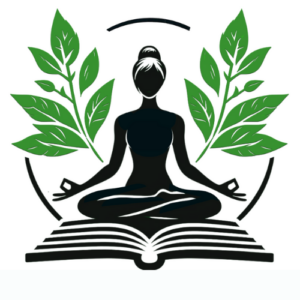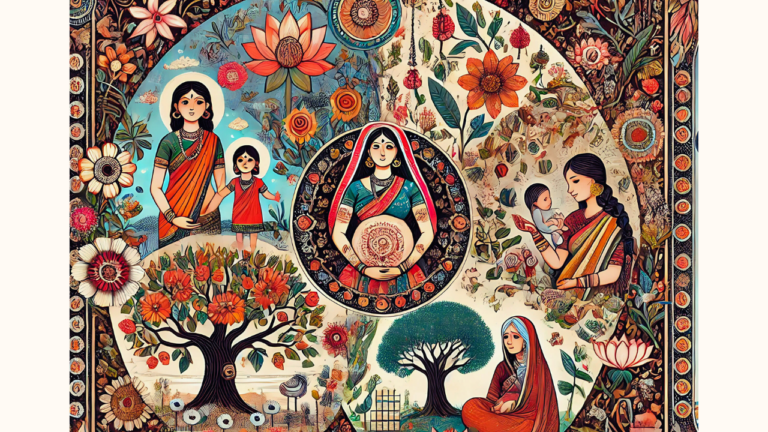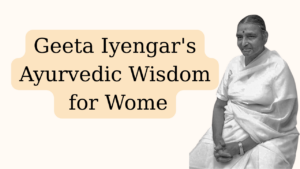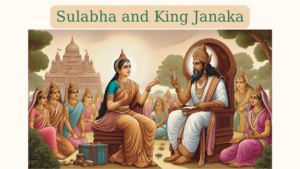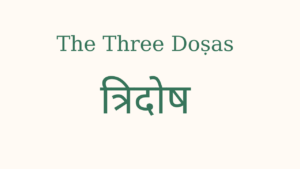The Iyengar yoga tradition recognizes six distinct life cycles in a woman’s journey, each requiring specific approaches and practices. While Geeta Iyengar’s “Yoga – A Gem for Women” focuses on three major milestones, the broader Iyengar tradition provides a more detailed framework for understanding women’s life stages.
1. Childhood and Adolescence
The journey from childhood to womanhood represents one of the most profound transformations in a woman’s life. As Geeta Iyengar explains in “Yoga – A Gem for Women,” this period marks a time when “the physiological functions taking place to develop the body into complete womanhood are at their peak to enable her to fulfil the responsibilities which nature has forced upon her.” This transition, typically occurring between the ages of ten and fifteen, involves a complex interplay of physical, physiological, and psychological changes.
The physical transformation during adolescence is remarkable in its scope and speed. The body undergoes a rapid increase in both height and weight, as it builds the foundation for adult womanhood. The hips begin to widen, creating the distinctive feminine form that will later support pregnancy and childbirth. This transformation is accompanied by the development of breasts and the full maturation of the reproductive organs, preparing the body for its future role in continuation of life.
The skin and muscle composition also undergo significant changes during this time. As Iyengar notes, “the oil glands under the skin secrete more oil, often resulting in acne or pimples around the cheeks and the forehead, a common cause of anxiety among teenagers.” The muscles in the body become harder, and there is a characteristic deposition of fat around the hips, contributing to the development of the female form.
At the core of these changes lies the intricate work of the endocrine system. The ovaries begin their cyclical function of producing ova, marking the beginning of the menstrual cycle. This process is orchestrated by the pituitary gland, which Iyengar identifies as crucial for healthy menstruation. She explains that “a healthy menstruation depends upon the proper functioning of the ovary and this, in turn, upon a healthy pituitary gland.”
The psychological transformation during this period is equally profound. Iyengar describes it as “a tug-of-war between two minds. Childhood tries to hold her back while adolescence impels her forward.” This creates a complex emotional landscape where self-consciousness and individuality begin to assert themselves with new intensity. The girl’s mind becomes “extra sensitive and her behaviour and moral conduct acquire razor-sharp keenness.”
It is during this critical period that yoga can offer particular benefits. Iyengar emphasizes that “Yogasanas and pranayama offer great help at puberty when the body is changing to womanhood.” Specific asanas, such as inverted postures and backbends, are noted as useful for stimulating the pituitary gland, while forward bends help ensure proper blood supply to the pelvic organs. Standing asanas prove invaluable for proper skeletal growth and improving body shape.
Beyond the physical benefits, yoga practice during adolescence helps young women navigate the emotional challenges of this transition. Iyengar notes that “Yogic practice at this age gives courage to approach womanhood without any mental disturbances. It helps control and check impulses and emotions; it gives balance of mind.” Through regular practice, young women can develop the strength to face their changing life and surroundings with confidence.
The ages twelve to fourteen are identified by Iyengar as ideal for beginning yoga, though she emphasizes that starting earlier, around age eight, can be beneficial if approached playfully. This early foundation can help establish both physical and psychological stability during the tumultuous years of adolescence.
Through yoga, the transition to womanhood becomes not just a physical transformation but an opportunity for holistic development. As Iyengar explains, “Yoga develops her physiologically, psychologically, morally, and spiritually to grow healthily and to lead a pure life.” In this way, yoga serves as both a stabilizing force and a guide through one of life’s most significant transitions, helping young women emerge with strength, grace, and confidence into their new identity.
Iyengar notes that “Along with physiological changes, psychological changes also occur at this age. A girl’s emotional life is stimulated and acquires an extra edge.” She describes this time as “a tug-of-war between two minds. Childhood tries to hold her back while adolescence impels her forward.”
During the late teens to mid-twenties, women experience full physical maturity. According to Iyengar, this is an ideal time to establish a strong yoga practice: “The ages twelve to fourteen are ideal to begin Yoga… However, even if one does not start at an early age, this should not prevent one from starting later.”
Menstruation Years
In “Yoga – A Gem for Women,” Geeta Iyengar describes menstruation as “a natural cyclic function occurring within the uterine system.” This monthly rhythm is fundamental to women’s reproductive health, unfolding through five distinct phases that each require their own approach to yoga practice.
The cycle begins with menstruation, typically lasting five days, during which the uterine lining is shed through menstrual flow. As Iyengar notes, “It is a purely physiological process preparing the female body for reproduction, a biological function.” During this time, women may experience varying levels of discomfort, from mild cramping to significant fatigue, and their yoga practice should be modified accordingly. This is a time for gentle, restorative practices that honor the body’s natural process of release.
Following menstruation, the post-menstrual phase brings a renewal of energy as the body begins preparing for ovulation. The uterine lining rebuilds, and many women find their strength and vitality returning. This phase, lasting approximately from day 6 to day 12 of the cycle, often allows for a return to more vigorous yoga practice as energy levels rise and physical comfort increases.
Ovulation marks the cycle’s midpoint, typically occurring around days 13-15. Iyengar explains that “The ovaries, the main female sex organs, are situated at the sides of the uterus and begin to function by producing ova, female sex cells, one of which matures every month.” During this time, women often experience peak energy levels and increased flexibility, making it an excellent time for more challenging asana practice.
The post-ovulation phase follows, during which the body prepares for potential pregnancy. If conception doesn’t occur, subtle hormonal shifts begin preparing the body for the next menstruation. This phase, lasting from around day 16 to 23, may bring gradual changes in energy and physical comfort, requiring practitioners to tune in closely to their bodies’ needs and adjust their practice accordingly.
The cycle concludes with the pre-menstrual phase, which can bring significant changes for many women. Iyengar acknowledges that many experience “premenstrual tension,” which may manifest as headaches, taut nerves, breast tenderness, and emotional sensitivity. During this time, yoga practice becomes particularly valuable for managing both physical and emotional symptoms.
Throughout all these phases, Iyengar emphasizes that “Yogasanas and pranayama offer great help.” Proper practice supports hormonal balance, as “a healthy menstruation depends upon the proper functioning of the ovary and this, in turn, upon a healthy pituitary gland.” The physical benefits are significant, as specific asanas “strengthen the pelvic muscles and improve blood circulation in the pelvic region.” Perhaps most importantly, “psychological tensions and pressures are reduced through the practice of asana and pranayama and one’s mental attitude changes from negative to positive.”
The key to practicing yoga throughout the menstrual cycle lies in understanding and respecting these natural rhythms. During menstruation, this might mean avoiding inverted poses and focusing on restorative practices. The post-menstrual and ovulation phases often allow for more dynamic practice, including strengthening poses and challenging sequences. As the cycle moves toward its conclusion in the pre-menstrual phase, practice may need to be modified again, with greater emphasis on calming poses and stress-reducing pranayama.
As Iyengar teaches, yoga should work in harmony with the body’s natural cycles, not against them. This means maintaining awareness of where we are in our cycle and adapting our practice accordingly. Through this mindful approach, women can use yoga to support their health and well-being throughout their reproductive years, finding balance and stability amidst the body’s natural rhythms.
The beauty of yoga lies in its adaptability to these natural cycles. Rather than forcing the body to conform to a rigid practice, yoga offers tools to support and enhance our natural rhythms. By understanding and honoring these cycles, women can develop a practice that truly serves their physical, emotional, and spiritual well-being throughout the month and throughout their lives.
Pregnancy and MotherhoodPregnancy, Birth, and Motherhood: The Yogic Journey
In “Yoga – A Gem for Women,” Geeta Iyengar offers profound insights into the journey of pregnancy and motherhood, emphasizing that “As you sow, so shall you reap… a woman who has looked after her health will reap the reward by having a healthy pregnancy and producing a healthy child.” This wisdom underscores the importance of preparation and ongoing care throughout the entire journey of motherhood.
The preparation for pregnancy begins long before conception. Iyengar emphasizes that “The time to save an unborn baby’s life is before pregnancy begins.” She particularly notes the importance of the thyroid gland, explaining that deficiency in its internal secretions can result in miscarriage. For this reason, she recommends specific practices like Sirsasana, Sarvangasana, and Setu-bandha Sarvangasana as preparation for conception.
The first trimester of pregnancy, spanning months one through three, is a crucial period requiring special attention and care. During this time, women often experience morning sickness, dullness, and weakness. There may be discharges or pains in the pelvic region, and changes in blood pressure are common. The risk of miscarriage is highest during this period, particularly due to improper formation of the placenta, prolapse, or muscular weakness of the uterus. While caution is needed, Iyengar emphasizes that yoga, practiced correctly, can help strengthen the pelvic muscles and improve circulation in the pelvic region.
As the pregnancy progresses into the second trimester, months four through six, Iyengar recommends specific asanas that work to expand the cavity of the pelvic region, creating space inside the uterus and ensuring proper blood circulation and adequate room for the movement of the child. Practices such as Parvatasana, Supta-Virasana, Upavista-Konasana, Baddha-Konasana, Sirsasana, and Supta-Padangusthasana become particularly valuable during this time.
The final trimester, months seven through nine, requires further adaptation of practice according to individual comfort. Iyengar advises that when breathing becomes heavy, certain poses like Sirsasana, Sarvangasana, and Halasana should be discontinued. However, she emphasizes that other postures, particularly sitting poses with concave back and spine strengthening asanas, can still be beneficial.
The practice of yoga during pregnancy has specific benefits for labor and delivery. Iyengar explains that yogasanas practiced throughout pregnancy strengthen the uterine muscles, enabling them to function more efficiently during delivery. She particularly notes the value of Baddha Konasana and Upavistha Konasana, which help broaden the pelvic area and dilate the neck of the womb.
After delivery, the focus shifts to recovery and nurturing. Iyengar emphasizes that the mother must be ensured both mental and physical rest during this time. She recommends beginning with gentle practices like Savasana and Ujjayi Pranayama I, which support both physical recovery and lactation. The importance of proper breathing for milk production is highlighted by medical science’s observation that for every ounce of mother’s milk, 400 ounces of oxygen are required.
The postpartum period brings its own unique challenges. From the first month after delivery, Iyengar recommends specific asanas that stimulate the pituitary gland, which secretes prolactin and controls lactation. These practices help address common postpartum concerns, including breast heaviness, muscle tone, and the accumulation of post-pregnancy fat. The abdominal organs require particular attention during this time, as they need to be strengthened and returned to their proper position.
Special circumstances, such as recovery from miscarriage or Caesarian section, require additional consideration. Iyengar assures that yoga can be safely restarted after miscarriage, provided one avoids straining the abdominal organs. Similarly, after a Caesarian section, yoga practice should be resumed gradually to regain health and strengthen the abdominal region. Even after procedures such as tubectomy or removal of the uterus, yoga can be beneficial, though it should be approached with appropriate care and gradual progression.
Throughout all stages of pregnancy, birth, and motherhood, Iyengar’s teachings emphasize that yoga, when practiced appropriately, provides invaluable support for both mother and child. The key lies in understanding how to adapt the practice to each stage while maintaining awareness of individual needs and limitations. This mindful approach to practice helps women navigate the profound physical and emotional changes of motherhood with greater ease and awareness.
Perimenopause, Menopause, and Postmenopause
The transition to menopause brings significant changes. As Iyengar describes, “Just as at the beginning of menstruation physical, physiological, and psychological disturbances occur, women again have to face disturbances at the stage of menopause.”
The menopausal transition, typically occurring between ages 40 to 50, brings significant changes to a woman’s body and mind. As Geeta Iyengar explains, this period involves complex shifts in the body’s endocrine system: “As the ovaries stop functioning, the other glands, namely, the thyroids and the adrenals, become hyperactive and there is an imbalance of hormones.” This hormonal imbalance manifests in various physical symptoms that can be quite challenging for women to navigate.
The physical manifestations during this time can be particularly demanding. Women often experience hot flushes, which can occur unexpectedly throughout the day. Blood pressure may become elevated, and many women report feeling a persistent heaviness in their breasts. Sleep patterns are often disrupted, leading to insomnia. Additionally, as Iyengar notes, women may struggle with obesity due to the metabolic changes occurring in their bodies.
The emotional and psychological aspects of menopause can be equally challenging. As Iyengar describes, women may experience “emotional disturbance, loss of balance and poise resulting in short temper, jealousy, depression, fear and anxiety.” These emotional changes aren’t merely superficial reactions but stem from deeper psychological adjustments, including what Iyengar identifies as “a feeling that one has lost one’s womanhood.” This makes menopause “a critical period of adjustment” that requires both physical and emotional support.
The physiological and metabolic processes during this time create a cascade of changes throughout the body. The cessation of menstruation either happens suddenly or becomes irregular, marking the end of the reproductive years. However, Iyengar emphasizes that yoga can be particularly beneficial during this transition. She notes that “practice of Yoga asanas is extremely beneficial, as it calms the nervous system and brings equipoise.” Rather than viewing menopause as merely an ending, Iyengar suggests that through yoga, women can find new strength and balance during this transformative period.
The final stage requires its own approach to practice. Iyengar offers an empowering perspective: “Yoga is a gift for old age. One who takes to Yoga when old gains not only health and happiness but also freshness of mind, since Yoga gives one a bright outlook on life and one can look forward to a happier future rather than looking back into the past.”
The Universal Nature of Yoga
Throughout all these stages, yoga remains accessible and beneficial. As Iyengar quotes:
“The young, the aged, the diseased, and the weak – all may take to the practice of Yoga and derive its benefits without hindrance.”
She emphasizes that “Hence nobody is exempted from doing Yoga practice and there are no excuses for not doing Yoga. How useful Yoga is can only be understood by practising it.”
The Iyengar tradition recognizes that each stage brings unique challenges and opportunities. By adapting yoga techniques to support women through these different life cycles, the practice helps balance hormones, maintain reproductive health, and promote emotional stability and mental clarity. This comprehensive approach transforms the experience of womanhood into a celebration of life’s different stages, providing tools for both physical wellbeing and emotional balance throughout a woman’s entire journey.
